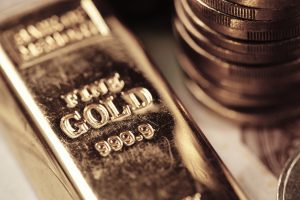Gold’s Monetary Rehabilitation
The comments below are an edited and abridged synopsis of an article by Alasdair Macleod
There is a revolution taking place on the back of the erosion of the dollar’s hegemony. Every time the US deploys its control over global trade settlement as a weapon against the regimes it dislikes, neutral observers take note and consider how to protect themselves, just in case.
 Russia has set up an alternative to SWIFT; China has taken steps to exclude the dollar from trade as much as possible and to enhance the role of the yuan. Now there is a schism over Iran between the US and Europe.
Russia has set up an alternative to SWIFT; China has taken steps to exclude the dollar from trade as much as possible and to enhance the role of the yuan. Now there is a schism over Iran between the US and Europe.
There are 3 possibilities beyond US influence: Chinese yuan, Russian rubles, and gold. No wonder the new yuan-for-oil contract is off to a roaring start. In the future, Iran will be able to spend its yuan on other raw materials, using a range of yuan futures contracts as a bridge to them from its oil.
US sanctions are forcing Iran onto a yuan standard for its foreign trade. China is there to pick up the pieces the West abandons because of US sanctions. The new Silk Road is opening up Iran, marginalizing US power.
Hong Kong and Dubai are cooperating in establishing additional vaulting facilities in China. For gold, where physical delivery in tonnes is tight, the Chinese are trying to ensure that deliverable liquidity will be there. The London Metal Exchange is considering introducing yuan contracts for base metals as well.
As for gold being used as money instead of fiat currencies, that is being contemplated by Asian governments. To an extent, gold is already used as money. But it is a backstop, the money of last resort, no one’s liability. What we could see is a platform that links the use of gold to trade settlement.
China has been planning for a post-dollar world since its leadership embraced free markets. The regulations appointing the PBOC with sole responsibility for gold and silver date back to 1983, since when we can assume the PBOC has accumulated gold at prices that varied between $250-$500 over a 19-year period.
China has encouraged its public to accumulate physical gold, and now they have roughly 18,000 tonnes. The state has approximately 20,000 tonnes. If China is to have the same currency cover as the US had on January 31, 1934, at current exchange rates, gold would have to be priced at $2,317.
Russia is now aggressively building gold reserves. The state has 1,910 tonnes (5 trillion rubles), which does not cover M0 (8.44 trillion rubles), but gold at $2,200 will, and gold at $2,860 would match the US’s 1934 holdings. If gold is to have a monetary role for Russia and China, it will be at a far higher price than today.

